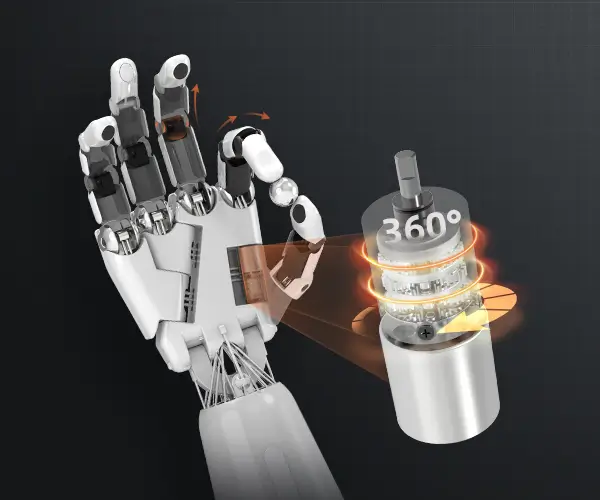Sure! Here's the first part of your soft article centered around "servo motor mount 3d print."
In the ever-evolving realm of robotics, the quest for precision, customization, and cost-effectiveness is relentless. Among the many components that make robotics progress possible, servo motors stand out as crucial drivers of movement and control. They are the backbone of robotic arms, drones, CNC machines, and numerous automation projects. But what truly elevates a robotic project from functional to exceptional is the quality of its mounting solutions. Enter the world of 3D printing, a game-changer that has democratized and revolutionized how hobbyists and professionals approach the design and fabrication of servo motor mounts.

The Rise of 3D Printing in Robotics
3D printing, or additive manufacturing, has experienced explosive growth over the last decade. It allows creators to produce complex, custom-designed objects rapidly and affordably. When it comes to robot construction, 3D printing enables the crafting of tailored parts—like servo motor mounts—that perfectly fit unique configurations or adapt to specific design needs.
Unlike traditional manufacturing, which often involves costly tooling and longer lead times, 3D printing offers a flexible platform for iterative development. You can rapidly prototype a mount, test its fit and function, then refine the design—all within hours or days. This capability is invaluable when working with servo motors, which have varying sizes and mounting hole configurations depending on the brand or model.
Why Customize Your Servo Mounts?
A custom servo mount isn't just about aesthetics; it's about performance, reliability, and ease of assembly. Standard mounts can sometimes be ill-fitting or limited in design, restricting movement or adding unnecessary weight. Custom mounts allow you to optimize:
Size and weight: Minimize bulk without compromising strength. Mounting angles: Fine-tune the orientation for precise motion. Accessibility: Simplify wiring, adjustments, and maintenance. Integration: Fit unique chassis or structural elements seamlessly.
For hobbyists and professionals alike, designing a tailored mount can dramatically improve the efficiency of a robot, leading to smoother operations and longevity.
Designing Your Own Servo Motor Mount
Creating a 3D printed servo mount begins with thoughtful design. Here are some core principles for a successful project:
Understand Your Servo Specifications: Obtain detailed datasheets or CAD drawings of your servo motor. Note dimensions such as width, height, length, hole spacing, and mounting hole diameters.
Use CAD Software: Programs like Fusion 360, Tinkercad, or FreeCAD allow detailed design work. Start by sketching the outline based on your measurements, and incorporate features such as mounting holes, slots for adjustable angles, or cable routing channels.
Material Selection: ABS, PETG, and PLA are common print materials. ABS and PETG are more durable and heat-resistant, suitable for motors that may get warm or face mechanical stress.
Incorporate Reinforcements and Support Features: Add extra ribs or walls for strength. Consider threaded inserts or slots for nuts, so the mount stays secure even with repeated adjustments.
Design for Accessibility and Maintenance: Include features like accessible screw holes, removable panels, or cable guides that facilitate wiring and future repairs.
Taking Design from Concept to Reality
Once your design is complete, the next step is printing. Ensure your printer’s settings are optimized for strength and precision—layer height, infill percentage, and print speed all matter. For structural parts like mounts, a higher infill (around 50-100%) ensures durability, especially if the mount will bear significant load or vibration.
Post-processing steps such as sanding, drilling, or tapping threaded holes can enhance fit and function. Sometimes, combining 3D printed parts with metal inserts or screws further increases their longevity under mechanical stress.
Practical Applications of 3D Printed Servo Mounts
Hobbyist robotics projects often serve as perfect test beds for custom mounts. For instance, constructing a small humanoid robot might require multiple servo motors for head rotation, arm articulation, or leg movement. Designing bespoke mounts allows you to precisely position these servos to achieve natural, fluid motion.
In automation systems, custom servo mounts improve accuracy in positioning tasks for CNC or 3D printing heads. In drone technology, lightweight and aerodynamic mounts can enhance flight performance while reducing vibration impacts.
The DIY Edge: Cost Effectiveness and Speed
Manufacturing custom servo mounts with 3D printing is often more affordable than ordering fabricated parts from machining shops. This DIY approach fosters experimentation and learning, empowering users to prototype innovative ideas swiftly.
Moreover, 3D printing encourages a culture of open-source collaboration. Many designers share their servo mount files online, which you can customize to your needs. Whether you’re refining a basic design or creating an elaborate articulated arm, the flexibility and speed of 3D printing make it an indispensable tool in modern robotics.
Stay tuned for the rest of the article, where we’ll delve into advanced design tips, material choices, real-world case studies, and future trends shaping the use of 3D printed servo mounts.
Kpower has delivered professional drive system solutions to over 500 enterprise clients globally with products covering various fields such as Smart Home Systems, Automatic Electronics, Robotics, Precision Agriculture, Drones, and Industrial Automation.




































